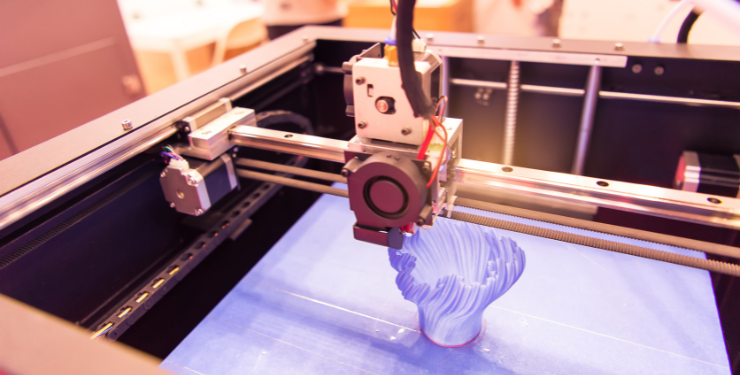Dubai, known for its technological innovations and ambitious projects, has witnessed significant advancements in 3D printing technology in recent years. The city has embraced this cutting-edge manufacturing technique and leveraged it across various industries, including construction, healthcare, aerospace, and more. This article explores the major advancements in 3D printing technology in Dubai, highlighting the key developments and their impact on different sectors.
Construction Industry:
One of the most notable advancements in 3D printing Dubai is its integration into the construction industry. The city has witnessed the construction of impressive 3D-printed structures, such as the Office of the Future, which became the world’s first fully functional 3D-printed building. The use of large-scale 3D printers and advanced materials has enabled the construction of complex and sustainable structures in a shorter time frame and at reduced costs.
Healthcare Sector:
Dubai has also made significant strides in utilizing 3D printing technology in the healthcare sector. Medical researchers and professionals have leveraged 3D printing to create patient-specific models, prosthetics, surgical guides, and implants. This personalized approach has enhanced patient outcomes, improved surgical accuracy, and reduced surgery time. Additionally, the production of customized medical devices and implants through 3D printing has revolutionized patient care and accelerated the healing process.
Aerospace and Defense:
The aerospace and defense industries in Dubai have embraced 3D printing technology for rapid prototyping, manufacturing lightweight components, and streamlining the supply chain. Additive manufacturing techniques have allowed for the production of complex, high-performance parts with reduced weight and increased efficiency. Dubai-based companies have partnered with global aerospace giants to develop innovative 3D-printed components for aircraft, satellites, and defense equipment, reinforcing the city’s position as a hub for aerospace innovation.
Education and Research:
Dubai recognizes the importance of fostering innovation through education and research. Several educational institutions in the city have established dedicated labs and research centers to explore and advance 3D printing technology. These facilities provide students and researchers with the opportunity to experiment with different materials, printers, and design techniques, driving the development of new applications and pushing the boundaries of 3D printing capabilities.
Material Innovation:
Advancements in 3D printing technology in Dubai have been closely linked to material innovation. Researchers and material scientists have focused on developing new materials specifically tailored for additive manufacturing processes. This includes the development of stronger, lighter, and more durable materials that can withstand the demanding requirements of different industries. Material options have expanded beyond traditional plastics to include metals, ceramics, composites, and even bio-compatible materials for medical applications.
Regulatory Framework:
To support the growth and safe implementation of 3D printing technology, Dubai has established a regulatory framework. The Dubai 3D Printing Strategy, launched in 2016, aims to position Dubai as a global leader in 3D printing by 2030. The strategy focuses on standardization, intellectual property protection, and ensuring the safe use of 3D printers and materials. This proactive approach has fostered a favorable environment for businesses and entrepreneurs to embrace 3D printing technology.
Collaboration and Partnerships:
Dubai’s advancements in 3D printing technology have been fueled by collaborations and partnerships between public and private entities. Government agencies, educational institutions, and businesses have joined forces to share knowledge, resources, and expertise. These collaborations have accelerated the development and adoption of 3D printing technology, promoting innovation and driving economic growth in Dubai.
Sustainability and Waste Reduction:
An important aspect of 3D printing technology is its potential to contribute to sustainability and waste reduction efforts. By utilizing additive manufacturing techniques, Dubai has reduced material waste during production processes. Moreover, the ability to create intricate designs and optimize material usage has led to a significant reduction in material consumption. This aligns with Dubai’s commitment to sustainability and its vision of becoming a smart and green city.
Cultural Heritage Preservation:
Dubai has recognized the potential of 3D printing in preserving and replicating cultural heritage. The city has utilized this technology to create precise 3D models and replicas of ancient artifacts and monuments. These replicas serve as educational tools, allowing visitors to experience and learn about historical objects and structures while ensuring the preservation of the originals.
Fashion and Design:
Dubai’s vibrant fashion and design industry has embraced 3D printing to push creative boundaries. Designers have leveraged this technology to create intricate and avant-garde fashion pieces, jewelry, and accessories. 3D printing enables the production of unique, customizable designs that would be difficult to achieve through traditional manufacturing methods.
Conclusion:
Dubai has emerged as a global frontrunner in embracing and advancing 3D printing technology. The city’s commitment to innovation, coupled with collaborations between public and private entities, has paved the way for remarkable advancements in various sectors.
From construction and healthcare to aerospace and education, 3D printing has revolutionized traditional manufacturing processes, leading to improved efficiency, cost-effectiveness, and customization. With a strong regulatory framework, a focus on material innovation, and an emphasis on sustainability, Dubai is poised to continue pushing the boundaries of 3D printing technology and cement its position as a global leader in additive manufacturing.













